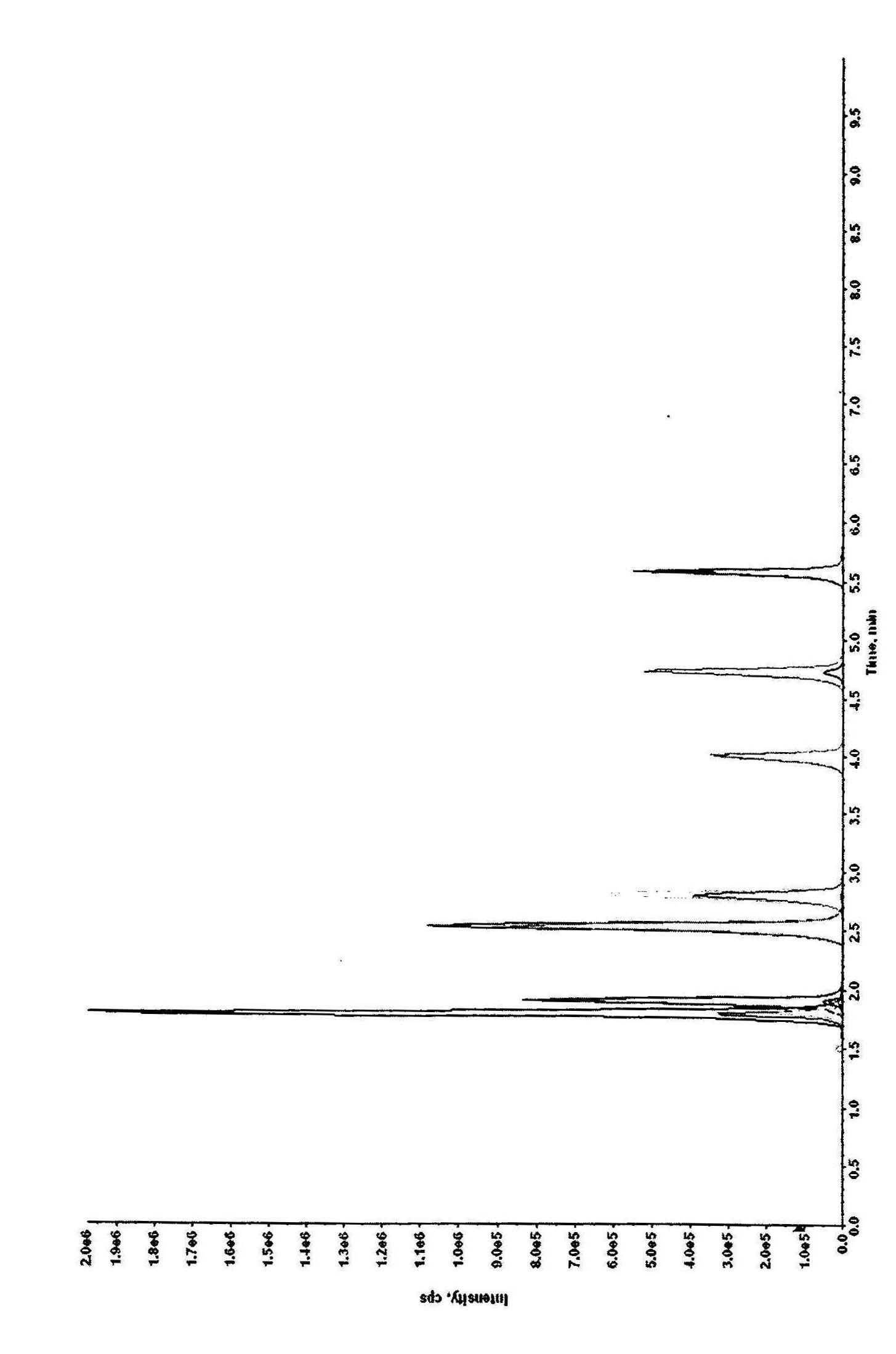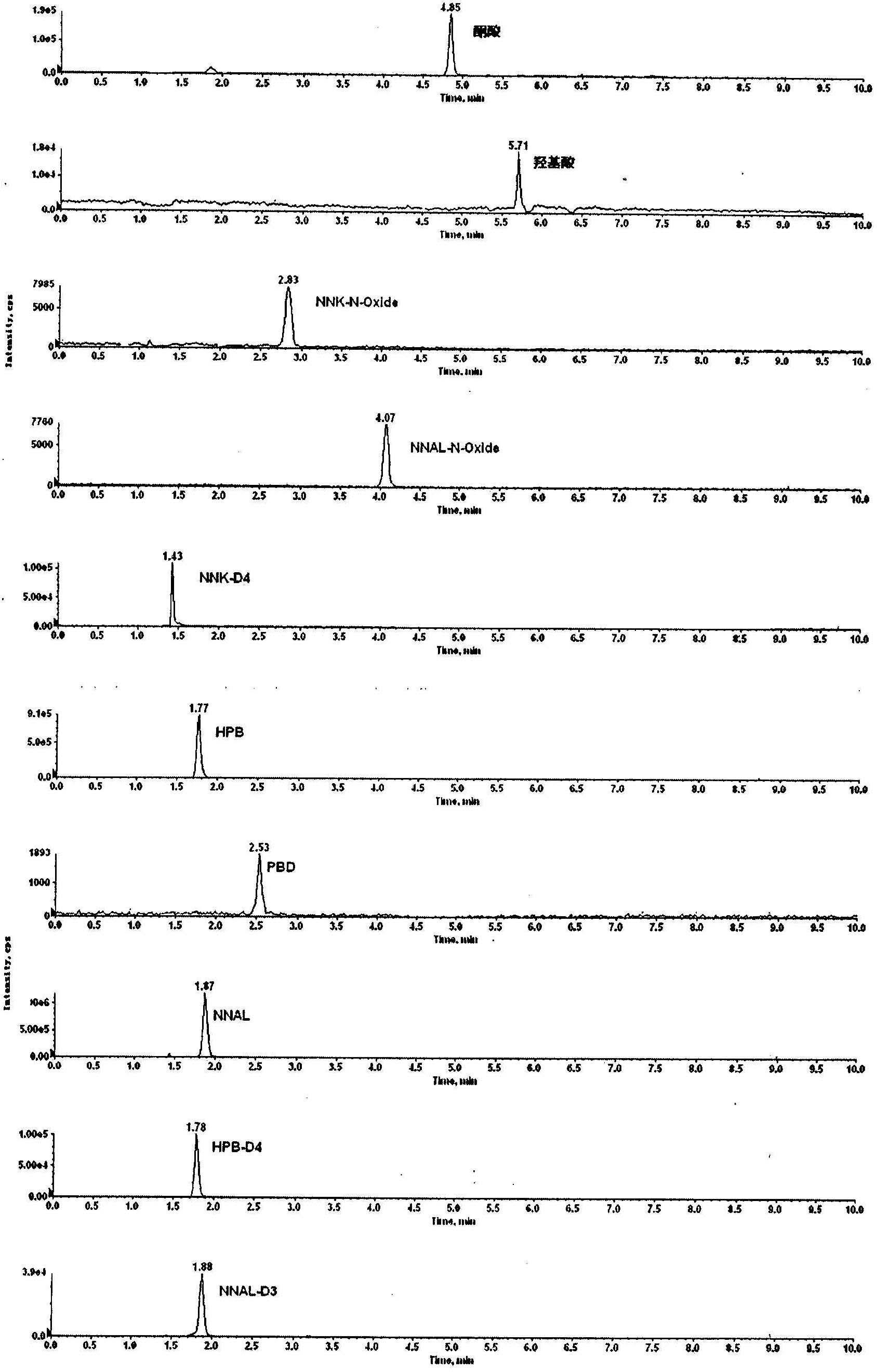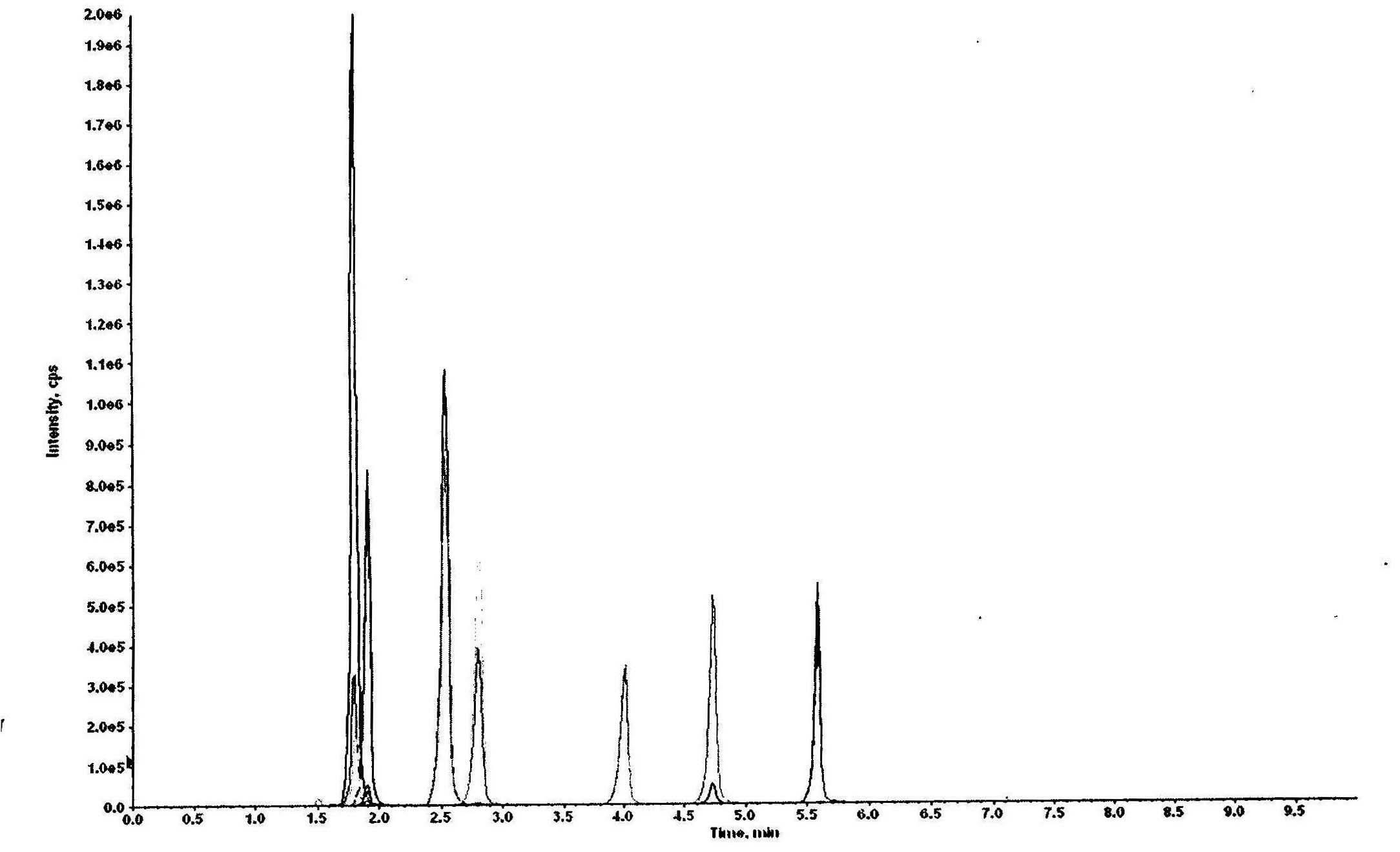LC-MC method used for determining NNK metabolites in liver microsomes
A technology of liver microsomes and liquid mass spectrometry, applied in the field of biochemical analysis, can solve the problems of limited application, low peak shape quality, radioactive contamination, etc., and achieve high detection sensitivity, simple pretreatment, and fast analysis speed Effect
- Summary
- Abstract
- Description
- Claims
- Application Information
AI Technical Summary
Problems solved by technology
Method used
Image
Examples
Embodiment 1
[0031] 1. Instruments and reagents:
[0032] Ultrapure water (resistivity ≥ 18.2 MΩ.cm); methanol (chromatographically pure, J&T Baker, USA); acetonitrile (chromatographically pure, J&T Baker, USA); formic acid (chromatographically pure, TEDIA, USA); ammonium formate (purity≥ 99%, Alfa Aesar Company); ammonium acetate (chromatographically pure, TEDIA Company, USA); 0.22 μm organic phase syringe filter (Agilent Company, USA).
[0033] 4-(methylnitrosamino)-1-(3-pyridyl)-1-butanone (NNK); 4-(methylnitrosamino)-1-(3-pyridyl)-1- Butanol (NNAL); 4-(methylnitroso)-1-(3-pyridyl-N-oxide)-1-butanone (NNK-N-Oxide); 4-(methylnitroso) -1-(3-pyridyl-N-oxidation)-1-butanol (NNAL-N-Oxide); 4-hydroxy-1-(3-pyridyl)-1-butanone (HPB); 1-( 3-pyridyl)-1,4-diol (PBD, hydroxy alcohol or diol); 1-(3-pyridyl)-1-butanone-4-carboxylic acid (keto acid); 1-(3- Pyridyl)-1-butanol-4-carboxylic acid (hydroxy acid, ammonium salt); 4-(methylnitrosamine)-1-(3-pyridyl-d 4 )-1-butanone (NNK-d 4 ); 4-Hydroxy-...
PUM
| Property | Measurement | Unit |
|---|---|---|
| ion source temperature | aaaaa | aaaaa |
| collision gas | aaaaa | aaaaa |
| diameter | aaaaa | aaaaa |
Abstract
Description
Claims
Application Information
 Login to View More
Login to View More - R&D
- Intellectual Property
- Life Sciences
- Materials
- Tech Scout
- Unparalleled Data Quality
- Higher Quality Content
- 60% Fewer Hallucinations
Browse by: Latest US Patents, China's latest patents, Technical Efficacy Thesaurus, Application Domain, Technology Topic, Popular Technical Reports.
© 2025 PatSnap. All rights reserved.Legal|Privacy policy|Modern Slavery Act Transparency Statement|Sitemap|About US| Contact US: help@patsnap.com



